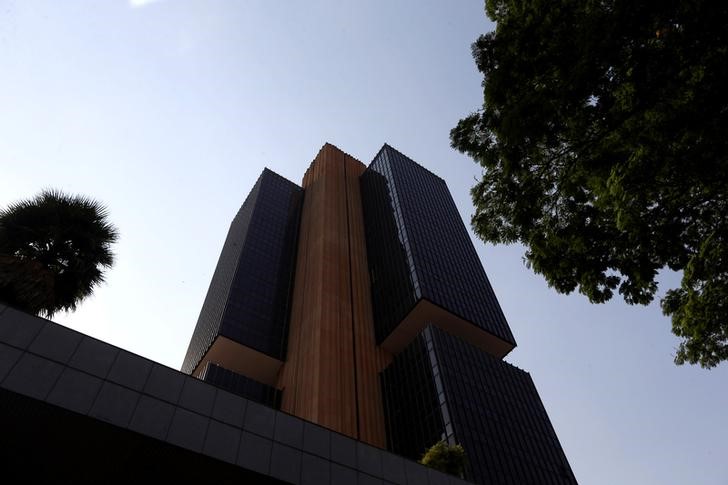By Alonso Soto and Silvio Cascione
BRASILIA (Reuters) - Brazil cut interest rates for the first time in four years on Wednesday, opting for a modest 25 basis-point reduction to launch an easing cycle aimed at pulling Latin America's biggest economy out of its worst recession in over a century.
The central bank's nine-member monetary policy committee, known as Copom, voted unanimously to cut its benchmark Selic rate to 14 percent, signaling it will proceed with a "moderate and gradual" easing cycle.
However, the bank said in its post-decision statement that it could opt for steeper cuts in the future if the pace of disinflation accelerates and Congress presses ahead with the approval of austerity measures.
"The magnitude of monetary easing and a possible speeding up of its pace will depend on a favorable evolution of factors that allow greater confidence on meeting the inflation targets at the relevant horizon for the conduct of monetary policy," the bank said.
Lower rates will help President Michel Temer in his effort to strengthen a recovery that remains elusive with high unemployment as well as dwindling industrial and service activity frustrating hopes of a rebound later this year.
For some analysts, the central bank is signaling a longer and more aggressive rate-cutting cycle is on the horizon.
"We believe the central bank will have enough elements to step up the pace of easing to 50 basis points at its next meeting despite the caution expressed today," economists with Sao Paulo-based Haitong said in a research note.
An overwhelming majority of analysts expected a rate cut, with many of them betting on a more aggressive 50-basis-point move.
In its statement, the bank said it forecast inflation at 4.3 percent in 2017 and 3.9 percent in 2018, but acknowledged private estimates remain above the 4.5 percent center of the official target for both years. Annual inflation currently stands at 8.48 percent.
Stubbornly high inflation forced the central bank to hold the Selic steady for the past year at one of the highest rates among the group of G20 industrialized economies.
However, a recent slowdown in inflation and the initial approval of a key austerity proposal in Congress gave the central bank's new governor Ilan Goldfajn enough arguments to cut borrowing costs.
The easing cycle could take the Selic below 10 percent by as early as late 2017, some analysts said. The last time Brazil had a single-digit benchmark rate was in 2013.
CONFIDENCE ON THE RISE
That prospect could lift the spirits of investors in an economy battered by months of political upheaval that led to the ouster of Temer's leftist predecessor Dilma Rousseff earlier this year.
For over a year businesses and politicians have demanded a rate cut to avoid stifling recovery during a second year of recession.
Lower borrowing costs could further lift confidence that has climbed steadily since Temer took office in May with a pro-business agenda.
The recovery, however, remains tentative with high unemployment and falling activity.
Service activity dropped by 3.9 percent in August from the same month last year, official data showed on Wednesday, a sharper fall than expected in the latest sign the recovery could be slow.
Economists in a global Reuters poll on Tuesday projected Brazil's economy would only resume growth on a year-on-year basis in the first quarter of 2017. [ECILT/LTAM]

Although the Selic is the financial sector benchmark rate, Brazil's new administration is calling on private banks to reduce the rate differential that they charge their clients. Some banks demand rates of up to 40 percent more than the Selic.